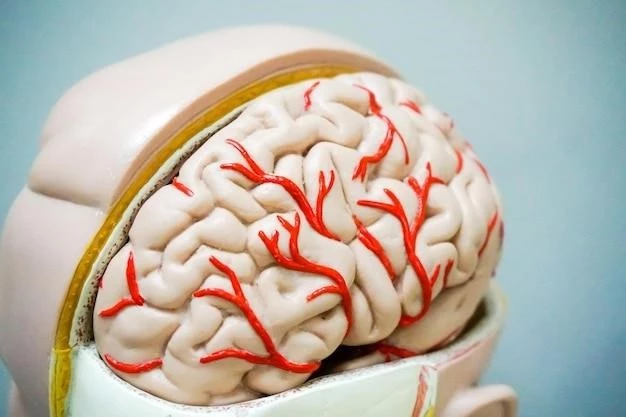Encephalocraniocutaneous Lipomatosis
Overview of Neurocutaneous Disorders
Neurocutaneous disorders encompass a group of conditions affecting the central nervous system and skin. These disorders commonly involve developmental abnormalities and may present with various symptoms and complexities. They often result from genetic mutations affecting different cellular processes, leading to a wide range of clinical manifestations. The intricate interplay between neurological and dermatological features in neurocutaneous disorders underscores the importance of comprehensive evaluation by interdisciplinary teams to ensure accurate diagnosis and appropriate management strategies.
Introduction to Encephalocraniocutaneous Lipomatosis
Encephalocraniocutaneous lipomatosis is a rare neurocutaneous disorder characterized by the triad of ocular abnormalities, central nervous system anomalies, and cutaneous lesions. Also termed Haberland syndrome, this condition is primarily identified by the presence of intracranial lipomas, ocular dermoids, and skin lipomas. The variable clinical presentation of encephalocraniocutaneous lipomatosis highlights the complexity of its multisystem involvement and necessitates a multidisciplinary approach for accurate diagnosis and management.
Definition and Background
Encephalocraniocutaneous lipomatosis, also known as Fishman syndrome, is a rare syndromic neurocutaneous disorder characterized by the presence of specific features including lipomas, ocular anomalies, and neurological abnormalities. First described in 1970 by Haberland and Perou٫ this condition typically manifests in early childhood and can have varying degrees of clinical severity. The underlying genetic and molecular mechanisms contributing to encephalocraniocutaneous lipomatosis are still under investigation٫ emphasizing the need for further research to enhance understanding and management of this complex disorder.
Incidence and Genetics
Encephalocraniocutaneous lipomatosis is an extremely rare disorder, with only a limited number of cases reported worldwide. The exact incidence remains unknown due to its rarity and variability in clinical presentation. While the precise genetic basis of the condition is not fully elucidated, encephalocraniocutaneous lipomatosis is thought to result from somatic mosaicism, where genetic mutations occur during early embryonic development leading to variable clinical features. Further genetic studies are essential to unravel the intricate molecular pathways involved in the pathogenesis of this complex neurocutaneous disorder.
Clinical Features of Encephalocraniocutaneous Lipomatosis
Encephalocraniocutaneous lipomatosis presents with a spectrum of clinical features, including lipomas and lipodystrophy affecting the central nervous system and skin, seizures often resistant to treatment, intellectual disability, craniofacial anomalies such as macrocephaly and hypertelorism, hypoplasia of the brain, neuronal migration disorder leading to cortical dysplasia, and ocular abnormalities. The syndromic nature of encephalocraniocutaneous lipomatosis entails a complex interplay of multisystem manifestations, necessitating thorough evaluation and management by a multidisciplinary team.
Lipomas and Lipodystrophy
Lipomas, benign tumors consisting of adipose tissue, are a characteristic feature of encephalocraniocutaneous lipomatosis. These lipomas can develop in the central nervous system, skin, or other tissues, contributing to the overall lipodystrophic appearance observed in affected individuals. The presence of lipomas in distinct anatomical locations poses diagnostic challenges and underscores the importance of comprehensive clinical assessment, including imaging studies, to evaluate the extent and impact of lipodystrophy in individuals with encephalocraniocutaneous lipomatosis.

Seizures and Intellectual Disability
Individuals with encephalocraniocutaneous lipomatosis often experience seizures, which can be challenging to manage and may require a multidisciplinary approach for optimal control. Additionally, intellectual disability is a common feature, varying in severity among affected individuals. The presence of seizures and intellectual disability underscores the neurological impact of this rare disorder and necessitates comprehensive neurological assessment and intervention strategies tailored to the specific needs of each patient.
Craniofacial Anomalies and Hypoplasia
Encephalocraniocutaneous lipomatosis is associated with craniofacial anomalies such as macrocephaly and hypertelorism, contributing to the distinct facial features observed in affected individuals. Additionally, hypoplasia of the brain is a common finding, indicating underdevelopment or incomplete formation of brain structures. The presence of craniofacial anomalies and hypoplasia underscores the multisystem nature of this disorder, necessitating comprehensive clinical evaluation and cranial imaging to assess the extent of structural abnormalities.
Neuronal Migration Disorder and Cortical Dysplasia
Neuronal migration disorder and cortical dysplasia are neurological features commonly observed in individuals with encephalocraniocutaneous lipomatosis, reflecting abnormalities in the migration and organization of neurons during brain development. These disruptions can lead to structural brain anomalies, including cortical dysplasia characterized by abnormal cortical organization. The association of neuronal migration disorder and cortical dysplasia underscores the complex neurodevelopmental aspects of encephalocraniocutaneous lipomatosis, highlighting the need for detailed neuroimaging and comprehensive neurological evaluation in affected individuals.
Diagnostic Criteria for Encephalocraniocutaneous Lipomatosis
The diagnosis of encephalocraniocutaneous lipomatosis is primarily based on clinical features and imaging findings. Diagnostic criteria include the presence of characteristic features such as lipomas, ocular abnormalities, neuroimaging evidence of intracranial anomalies, and cutaneous lesions. Syndromic presentation encompassing seizures, intellectual disability, and craniofacial anomalies further supports the diagnosis. Given the complexity of encephalocraniocutaneous lipomatosis, a multidisciplinary approach involving neuroimaging, genetic testing, and clinical evaluation is crucial for accurate diagnosis and appropriate management.
Neuroimaging Findings
Neuroimaging plays a crucial role in the diagnosis of encephalocraniocutaneous lipomatosis. Imaging modalities such as MRI reveal intracranial anomalies, including lipomas, malformations of cortical development, and white matter abnormalities. The identification of these neuroimaging findings is essential for confirming the diagnosis and assessing the extent of central nervous system involvement. Additionally, neuroimaging aids in evaluating the structural integrity of the brain, guiding treatment decisions, and prognostication in individuals with encephalocraniocutaneous lipomatosis;
Cutaneous Lesions and Ocular Abnormalities
The presence of cutaneous lesions, including lipomas, and ocular abnormalities are hallmark features of encephalocraniocutaneous lipomatosis. Cutaneous lipomas, typically occurring in the scalp and face, contribute to the distinct phenotypic appearance of affected individuals. Ocular abnormalities, such as choristomas and dermoids, can manifest as dermal cysts or lesions in the eye. The identification and evaluation of these cutaneous and ocular manifestations are crucial for the clinical diagnosis and management of encephalocraniocutaneous lipomatosis, highlighting the importance of dermatological and ophthalmological assessments in affected individuals.
Syndromic Presentation and Intracranial Anomalies
Encephalocraniocutaneous lipomatosis presents with a syndromic phenotype encompassing neurodevelopmental abnormalities, seizures, intellectual disability, craniofacial anomalies, and intracranial anomalies such as lipomas and cortical dysplasia. The syndromic presentation underscores the multisystem involvement and complexity of this rare disorder. Intracranial anomalies identified through neuroimaging play a pivotal role in confirming the diagnosis and guiding management decisions in individuals with encephalocraniocutaneous lipomatosis. Understanding the syndromic presentation and intracranial anomalies is crucial for comprehensive care and interventions tailored to the specific needs of affected individuals.
Somatic Mosaicism in Encephalocraniocutaneous Lipomatosis
Somatic mosaicism plays a critical role in the pathogenesis of encephalocraniocutaneous lipomatosis, where genetic mutations occur post-zygotically during early embryonic development. This mosaic pattern leads to the presence of genetically distinct cell populations within an individual, contributing to the varied phenotypic expression and clinical heterogeneity observed in affected individuals. Somatic mosaicism underscores the complexity of encephalocraniocutaneous lipomatosis and highlights the importance of genetic testing and molecular studies to elucidate the underlying mechanisms and variability in clinical presentations of this rare neurocutaneous disorder.
Management and Treatment Strategies
The management of encephalocraniocutaneous lipomatosis entails a multidisciplinary approach focusing on symptomatic treatment and supportive care. Seizures may require antiepileptic medications tailored to individual needs, while intellectual disability necessitates educational and behavioral interventions. Craniofacial anomalies may benefit from surgical correction, and skin lesions such as lipomas may require monitoring for potential complications. Ongoing neurodevelopmental assessments and genetic counseling are essential components of the comprehensive care plan for individuals with encephalocraniocutaneous lipomatosis. While there is no curative treatment, interdisciplinary collaboration aims to optimize outcomes and enhance the quality of life for affected individuals.
Prognosis and Complications
The prognosis of individuals with encephalocraniocutaneous lipomatosis varies depending on the extent of neurological and systemic involvement. Complications may arise from seizures, intellectual disability, and surgical interventions for associated anomalies. Neurological sequelae, developmental delays, and the potential for progressive neurological deterioration can impact long-term outcomes. Regular monitoring for complications such as hydrocephalus, vision issues, and skin abnormalities is crucial. Early intervention and comprehensive management can help mitigate complications and improve the overall prognosis for individuals living with encephalocraniocutaneous lipomatosis.
Current Research and Future Directions
Ongoing research on encephalocraniocutaneous lipomatosis aims to elucidate the underlying genetic and molecular mechanisms driving the disorder’s pathogenesis. Studies focus on identifying specific gene mutations, understanding somatic mosaicism, and exploring potential therapeutic targets. Future directions may include the development of personalized treatment approaches based on genetic profiles, further characterization of the neurodevelopmental impact, and advancements in diagnostic modalities. Collaborative efforts between researchers, healthcare professionals, and advocacy groups are essential to advance knowledge, improve diagnostic criteria, and enhance management strategies for individuals affected by encephalocraniocutaneous lipomatosis.
Conclusion
In conclusion, encephalocraniocutaneous lipomatosis is a complex and rare neurocutaneous disorder characterized by a spectrum of clinical features, including lipomas, seizures, intellectual disability, craniofacial anomalies, and ocular abnormalities. The syndromic nature of the condition, combined with the intricate interplay of neuronal migration disorder and cortical dysplasia, underscores the challenges in diagnosis and management. Advances in neuroimaging, genetic testing, and multidisciplinary care have improved our understanding of this condition. Future research efforts hold promise for enhancing diagnostic accuracy, refining treatment strategies, and ultimately improving outcomes for individuals affected by encephalocraniocutaneous lipomatosis.
